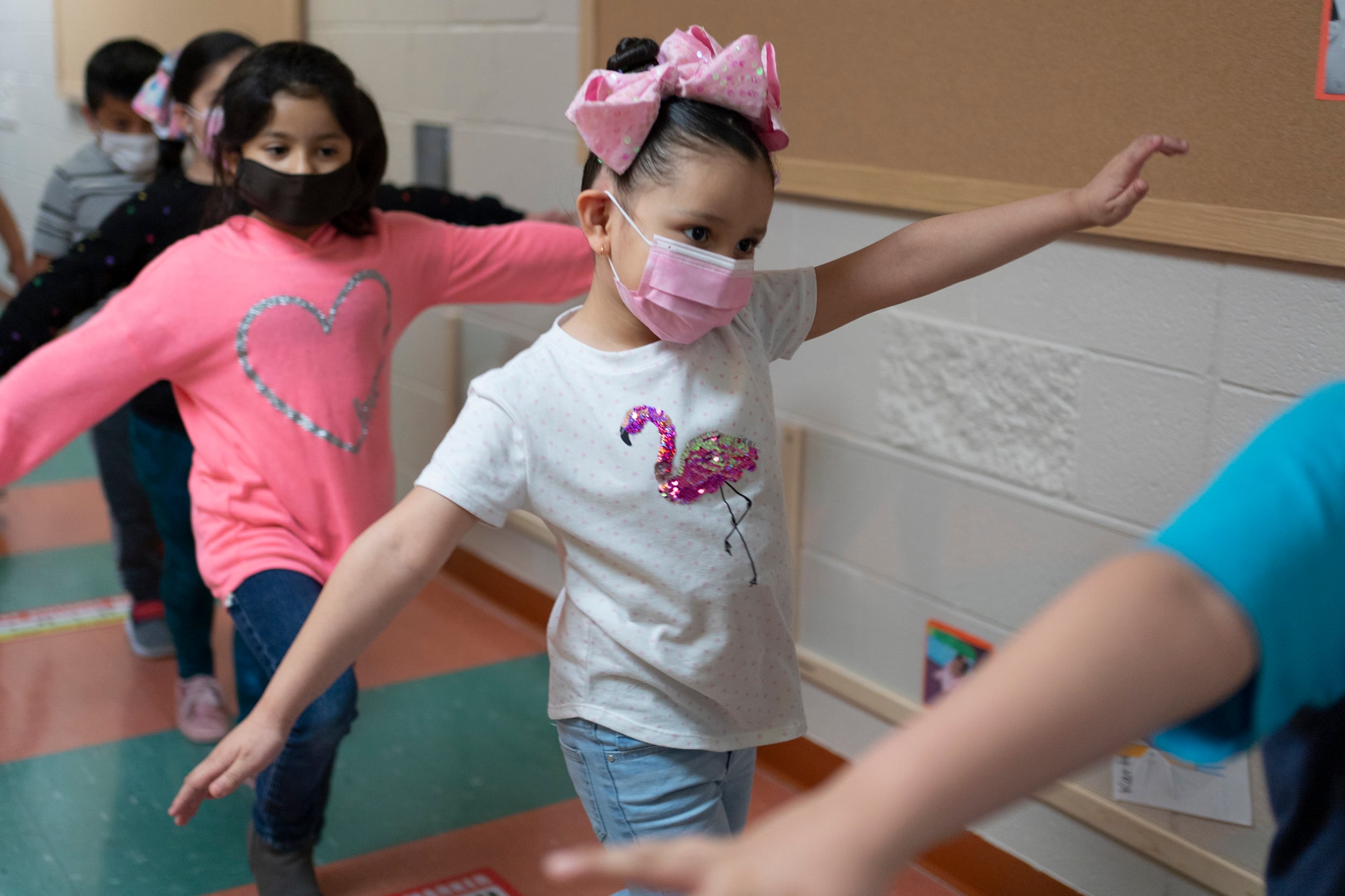Illinois schools and early childhood centers can ease some COVID protocols — including regular screening tests, quarantining close contacts, and social distancing — but are recommended to continue masking to limit cases, according to the latest federal public health guidance.
The state’s department of public health and the state board of education announced late Friday that Illinois has adopted the latest Centers for Disease Control and Prevention guidance for K-12 schools and child care centers. State officials said the expansion of vaccines for children 6 months and older, a decrease in hospitalizations, and other public health mitigations factored into their decision to update their guidance.
“This updated guidance from the CDC acknowledges the importance of in-person learning by allowing schools to more aptly adjust to changes within their own communities,” said state superintendent Carmen Ayala in a press release on Friday.
The state is asking that parents keep sick students at home and use tests to rule out COVID-19. Schools are required to provide remote learning for students in quarantine this school year, according to the state’s remote learning declaration from last fall.
Chicago Public Schools said the district will review the latest federal guidelines and work with the city’s public health department on its plans before school doors open on Aug. 22.
Schools districts across the state can make local decisions about how they want to mitigate COVID-19 in their schools. Throughout the pandemic, the state board of education along with the state’s health department has encouraged districts to work with their local health departments to determine the needs of their community.
“Teachers, professors and education support professionals are looking forward to welcoming students to the new school year,” said Kathi Griffin, president of the Illinois Education Association. “We trust schools and universities to work collaboratively with employees to ensure each school has done everything necessary to keep students, educators and communities safe and healthy.”
Here’s what you need to know about the latest guidance.
No need to quarantine if exposed:
The latest federal guidance says students no longer have to quarantine if they have been exposed to COVID-19. However, those who have been exposed should wear a mask for 10 days, regardless of vaccination status.
If someone tests positive for the coronavirus, the guidance says they should isolate for at least five days.
Last year, Illinois schools and child care centers had to close classrooms to limit the spread of coronavirus and other students and staff were sometimes absent for long stretches. Students were often unable to access remote learning during the time they were in isolation.
Easing testing for schools:
Some schools used a “test-to-stay” program last school year to test students exposed to COVID-19, as a way of limiting the number of students in quarantine. The latest CDC guidance says schools and child care providers no longer have to use that program.
Illinois school districts are pulling away from testing students at schools. The state’s health department has a partnership with the University of Illinois to administer the SHIELD test — the university’s saliva-based test for COVID. Around 180 districts out of the state’s 852 school districts have applied for the program this year, compared to 250 districts last year, according to a Chicago Tribune report.
The Illinois department of public health announced last week that it would ship a one-time bulk shipment of one million over-the-counter COVID-19 rapid antigen tests to K-12 public school districts outside of Chicago for this school year.
The CDC also said K-12 schools and child care centers can stop regularly screening students for COVID. Federal public health officials only recommend this kind of testing when there is high community spread and students and staff are participating in high-risk activities such as sports.
Wear a mask to prevent spread:
The latest federal health guidance recommends wearing high-filtration masks to prevent the spread of the coronavirus. When the transmission rate is high, indoor masking is recommended for all K-12 schools and child care centers. Masking is recommended in health care settings such as school nurses’ offices regardless of vaccination status.
For those younger than 2 and for some students with disabilities who cannot wear a mask, it is recommended that schools and child care centers use other strategies such as improving ventilation and social distancing.
Samantha Smylie is the state education reporter for Chalkbeat Chicago, covering school districts across the state, legislation, special education, and the state board of education. Contact Samantha at ssmylie@chalkbeat.org.







